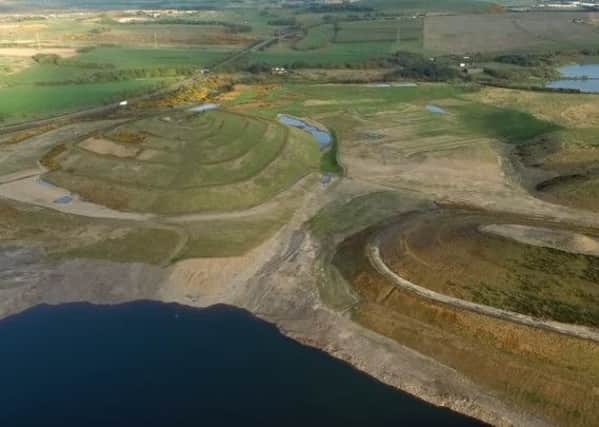The Fife village of Lassodie that vanished when the pits closed


All that is left to mark the community which built up around the coal seams of west Fife is the village war memorial - and a fairly impressive claim to fame.
A young Sean Connery was a regular visitor to the village after his grandparents Neil and Helen McLean retired there in the early 1930s.
Advertisement
Hide AdAdvertisement
Hide AdThe couple lived in a small cottage, Bentymires, on the south west of the village near Craig Duckie Farm.


Their grandson, then known as Tommy, would travel from Lassodie with his grandfather to watch Dunfermline Athletic play at East End Park, with the actor later claiming he had held a long affection for The Pars.
Lassodie, a community which survived between the 1860s and the early 1940s, was a village which came and went with the rise and fall of the Scottish coal mining industry.
Most of the villagers had departed by 1931, when the mines were closed and workers forced to leave their homes.


But during its height, it had an impressive record of coal production and an almost self-sufficient community.
By 1901, census records show that 1,400 people lived there with later newspaper reports later suggesting the population rose to 2,000 over the three hamlets of the village.
Supporting the community was a Post Office, a tavern, two branches of the Co-op, a school and a United Free Church.
Advertisement
Hide AdAdvertisement
Hide Ad

The village football team was said to be extraordinarily difficult to beat at home.
Conditions in Lassodie were basic, records from the 1875 General Assembly of the Free Church of Scotland suggest.
The report described the church as “free of debt and a very handsome structure” but stressed the demand for a manse in the village.
It said: “They are taking steps for the erection of a manse, which is much needed as the only place the minister can get to live is in an earth-floored room in one of the cottages - a most wretched place to study and live in.”


The potential for coal on the Lassodie Estate was first touted in an advert in The Scotsman on March 2, 1825.
In 1851, the estate of Cocklaw, including the lands of Lassodie, was put up for sale for £9,500 following the death of owner Sir James Moodie.
The advertisement told of six or seven seams of coal on the land which an Edinburgh mining engineer had reported to hold “considerable value.”
Advertisement
Hide AdAdvertisement
Hide AdThe Lassodie Coal Company was to strike up operations in 1859 with extracted coal sold for the first time the following year.
General manager James Brownlie, who was remembered for his “cordial and satisfactory” relationships with his staff, arranged for the first homes for workers to be built with Old Rows constructed close to the pit head.
New pits were opened up as production intensified. By 1893 the pits known as Numbers 10 and 11 were sunk at the east side of the estate with the latter going to a depth of 124 fathoms, according to research by the Dunfermline Historical Society.
With more labour required, Lassodie grew to include the new hamlets of Fairfield and New Rows, with a village of more than 200 cottages now in place.
A school able to take 250 children was also constructed.
By 1925, coal mining was being punished by the strong pound, high interest rates and the unstable post-war environment.
In February,it was announced that four coal pits owned by The Fife Coal Company were to close with a total of 1,000 workers affected.
Further research carried out by the Scottish Coaliming Website details a recommendation to close the church at Lassodie given workers had received 14 days notice to quit their houses.
Advertisement
Hide AdAdvertisement
Hide AdBy August 1933, villagers had largely dispersed but hanging on were 30 people still living in Fairfield and 13 families still occupying New Rows.
While a handful of residents held on to life at Lassodie, the housing became unsanitary and the entrance roads dangerous. Few people visited at night, given the lack of street light, with residents using carbide pit lamps to get around.
New houses were built for the remaining residents at Kelty in the late 1930s and the remaining Lassodie properties demolished in the early 1940s. Some open cast mining later took place at Lassodie, by then known as the St Ninian’s Colliery.
The site was to be redeveloped into a land sculpture park by world renown landscape architect Charles Jencks as part of the Fife Earth Project.
Work ceased on the ambitious redevelopment in 2014 due to the financial problems of Scottish Coal.
It is not known whether Sir Sean has revisited the remains of Lassodie - but he is still known to check the scores for Dunfermline Athletic.
